I am always fielding questions about how lighting affects your room. And, I continue to be amazed at what can be done with new LED technologies in lighting. Whether you prefer warm, cool or daylight lighting in your kitchen, here’s a new option that I had to share with you.
During my visit to West Palm Beach I was fortunate to work with one of my lovely readers and a recently minted True Colour Expert on confirming decisions she was making for colours and future updates!
When your lighting turns your cabinets yellow.
Over the years, I have been asked over and over again about lighting under your cabinets, however since I do not manage kitchen renovations, I really didn’t know enough about it to help.
Recently, however, when I was in a client’s kitchen I noticed that her much warmer recessed lighting turned her off-white cabinets CREAM when they were on, so you might need to consider changing your lighting if this is happening in your kitchen.
Read more: One more reason to skip recessed lighting altogether.
This dandy new under cabinet lighting technology is the answer, my lovelies.
Cindy’s husband Jeff, had switched out their old halogen bulbs to these swanky new LED under counter lighting with adjustable settings for warm, cool and daylight!
So, I had to show you:
You can see that with the daylight setting, 5000 Kelvin, the colours show true. And if your white kitchen looks somewhat yellowed and dingy in artificial light in the evening, LED daylight bulbs are worth considering to get a truer fresh white look.
Enbrighten LED Under cabinet light
Buh-bye dingy fluorescents and overheated halogens.
Isn’t it amazing what can be done with new LED technologies in lighting? Remember when our options were pretty much warm atmosphere from energy sucking incandescents or cold, greenish flat light from “efficient” fluorescents? I realize that a lot of institutional spaces are still equipped with fluorescent tubes for practical reasons, but it will be so nice to see the back end of them for good.
And then halogens came along, a bit more efficient, but hot. And yellow. Everything was yellow.
Now we have options, hooray! And when you have options, it’s a good idea to make informed decisions and get to know your preferences. What that looks like for interiors I think, is to consider what the room is most used for.
>> Read about the 5 lamps everyone home needs here.
Different lighting for different rooms.
A kitchen for example is an active space. You need to clearly see what you’re doing when you’re cooking and the kids are doing homework. It makes sense in a kitchen, especially a crisp white one, to have clean and true daylight type lighting.
But I’m curious how you all feel about daylight bulbs in your lamps that you use in rooms where the goal is socializing and relaxing. This is where I tend to prefer warmer soft white bulbs. In the wind down of the evenings, the warm light of a fire or candles is more atmospheric and conducive to relaxation. It probably has something to do with our history as humans of gathering around a fire or hearth, don’t you think? Or am I just a romantic?
Read more: 4 reasons your white wall colour looks wrong – it’s not the lighting!
Is there more to the temperature of lighting than your preference?
There is also science to say that cooler light frequencies in the evening upset our sleep and wake cycles or circadian rhythms, and this is why the blue light from screens is not ideal in the few hours before bed. I’m curious, is that a factor you are concerned about? Or you more committed to your blues and whites looking true all day and night?
I’d love to hear about your preferences for light temperatures in your lamps and lighting. Does it vary from room to room or activity to activity? Are we headed down the path of being able to adjust each bulb in our home according to our preference in the moment?
When teaching my System for Specifying Colour in my live workshops, I downplay the effect of light on colour, not because it isn’t a factor, but because it’s not nearly as BIG of a factor as it is given credit for. People are much too quick to blame the light when in fact they have chosen the wrong colour to pull their space together.
However, it is worthwhile, certainly in the case of light colours and white cabinets, to play around a bit with the temperature of your lighting to see if you can either create a crisper, cleaner look, or a warmer mood to help you unwind.
Jeff & Cindy
Over to you my lovelies, I would love to hear your thoughts and opinions, I so appreciate how ya’ll move the conversation forward and often the comments are even better than the post!
Related post:
The Real Reason Your Lighting Sucks
The Enchanting World of Atmosphere
7 Ways to Make the Most out of What You Already Have (before & after)

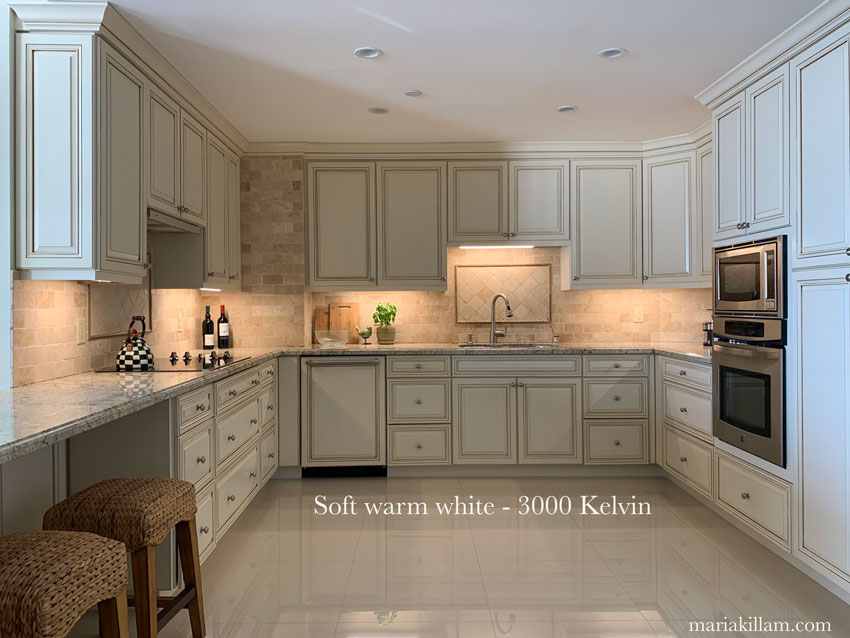
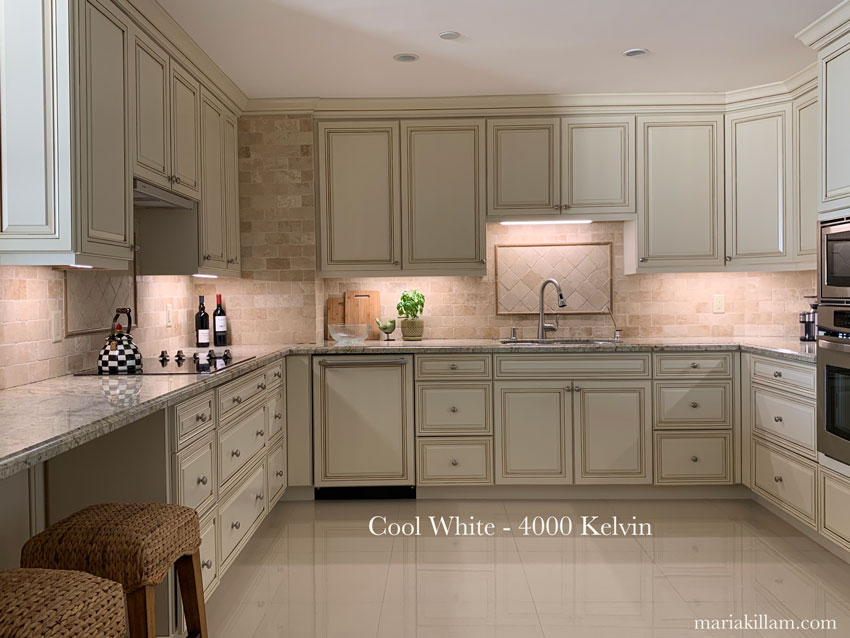
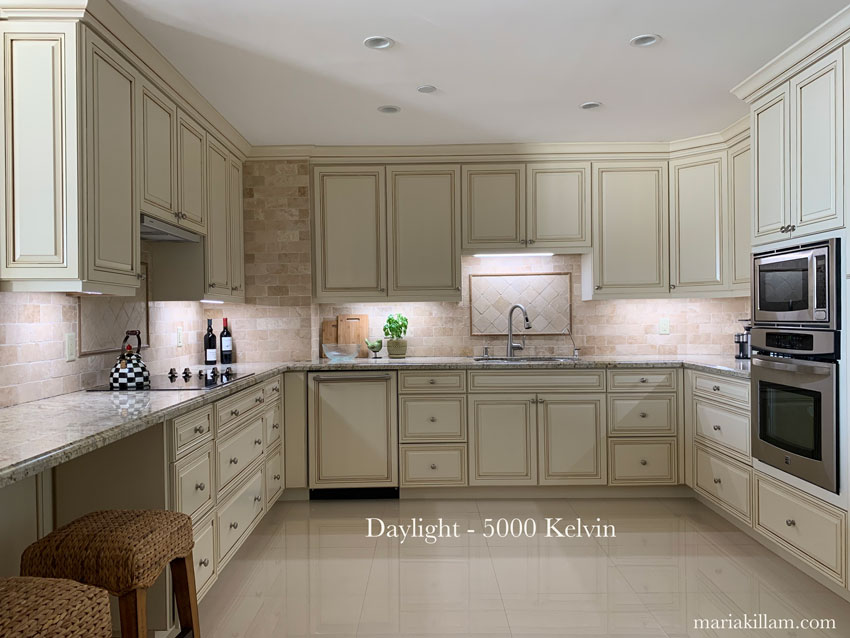
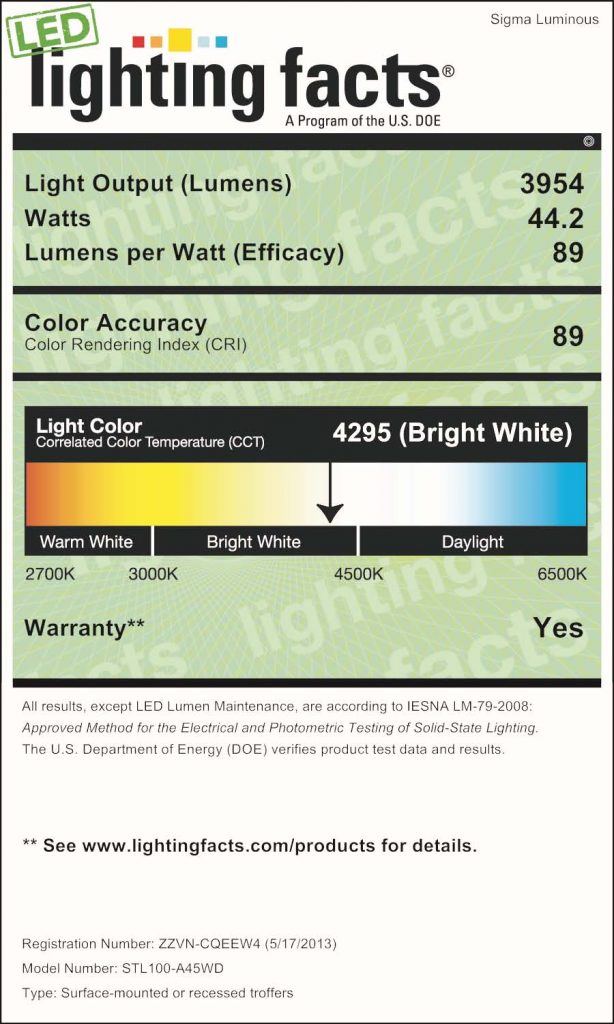
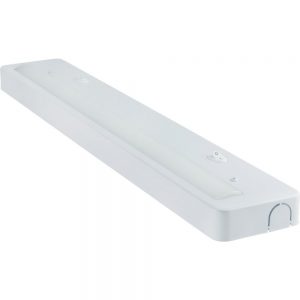
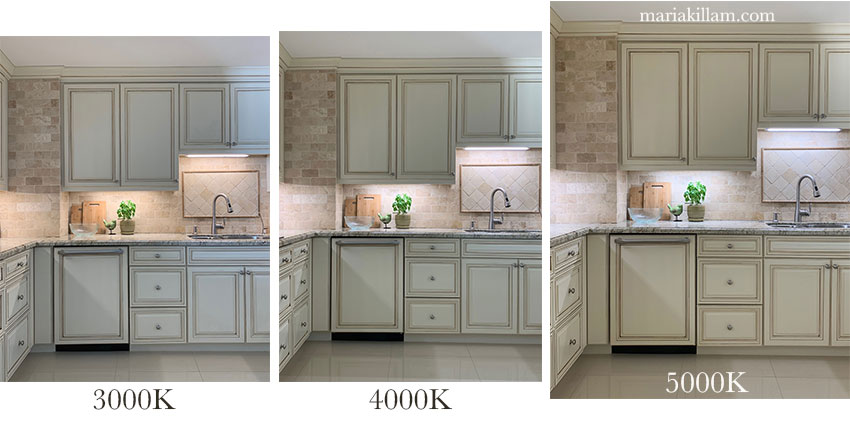

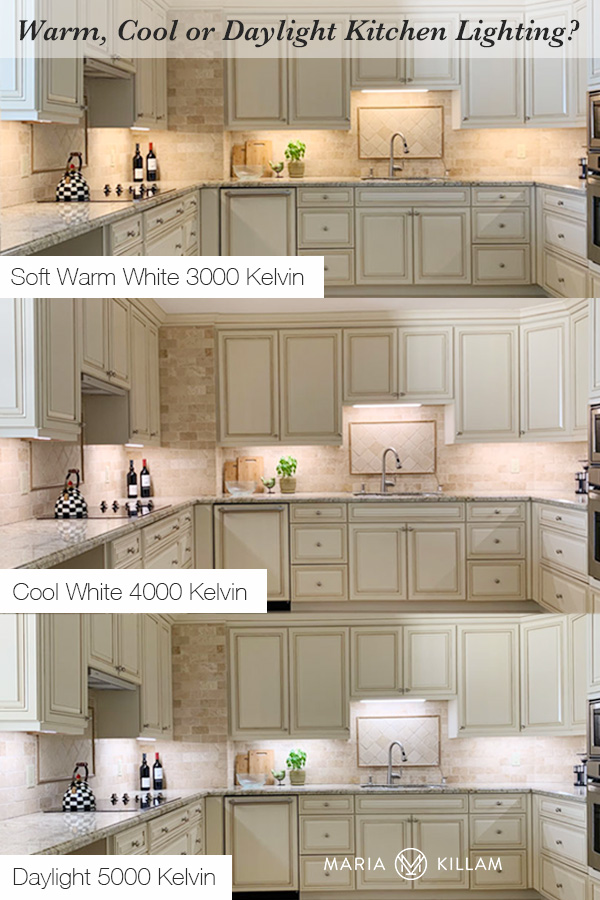
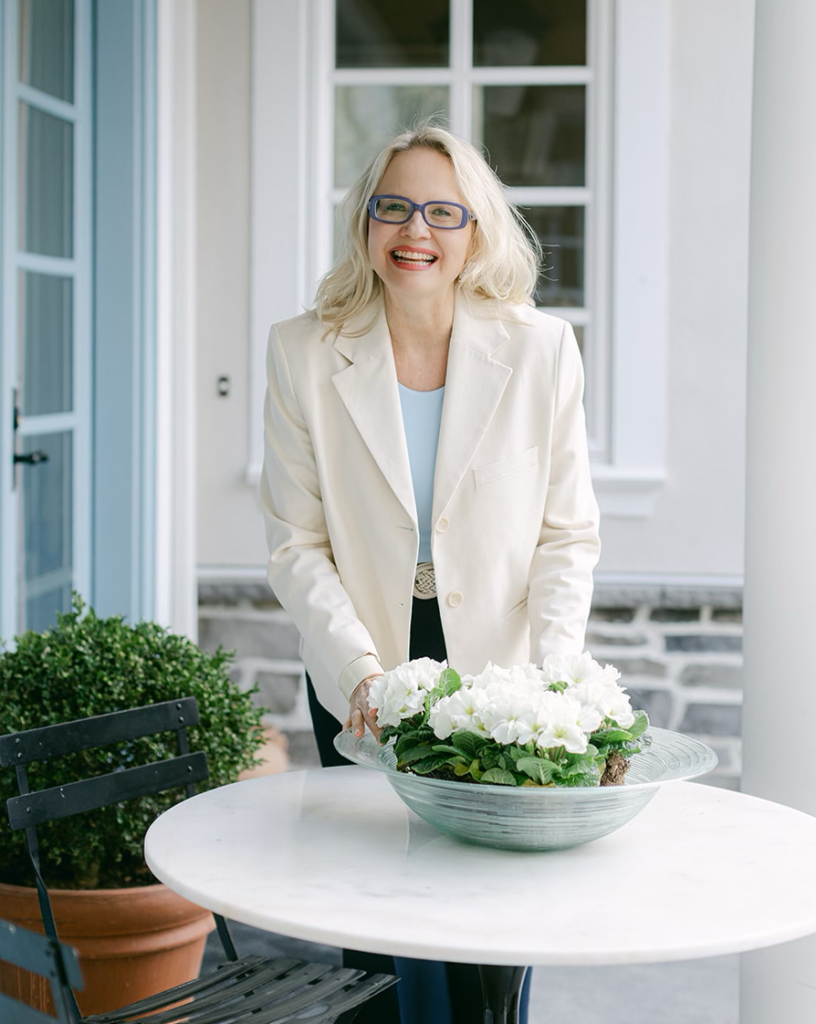



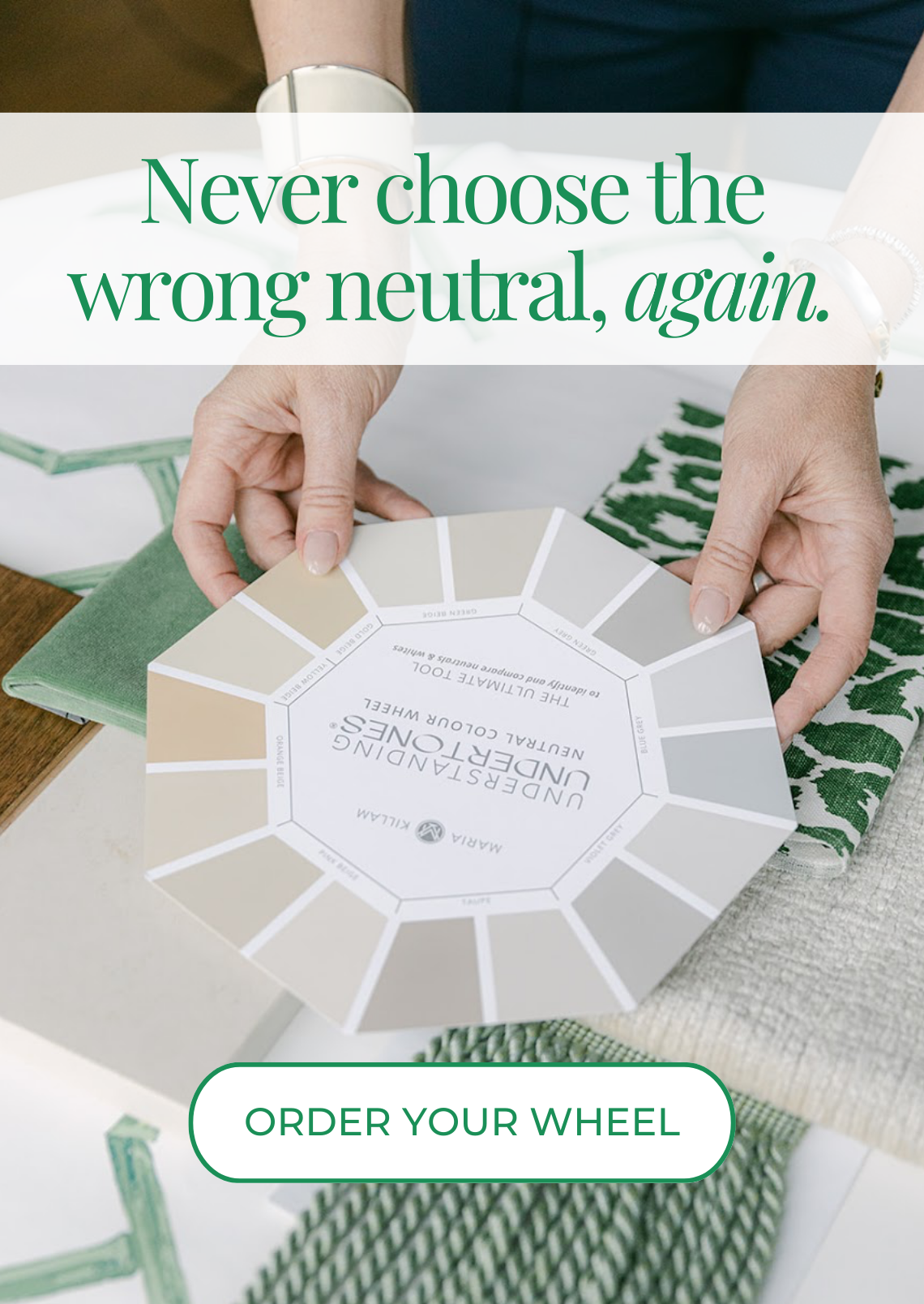
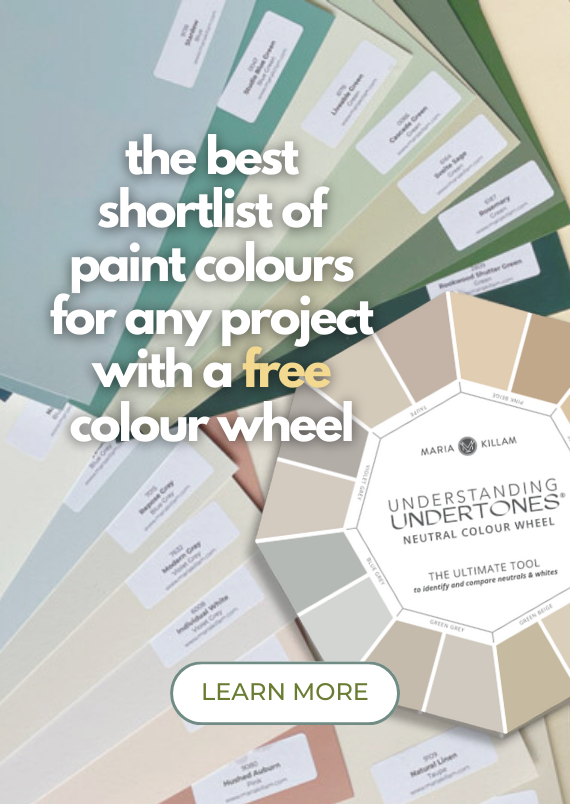
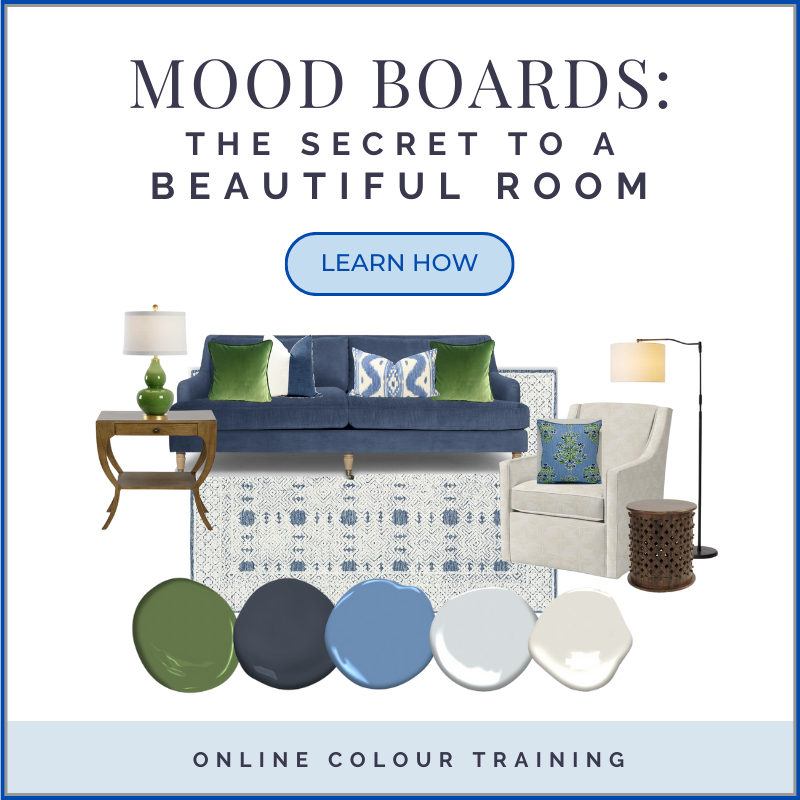
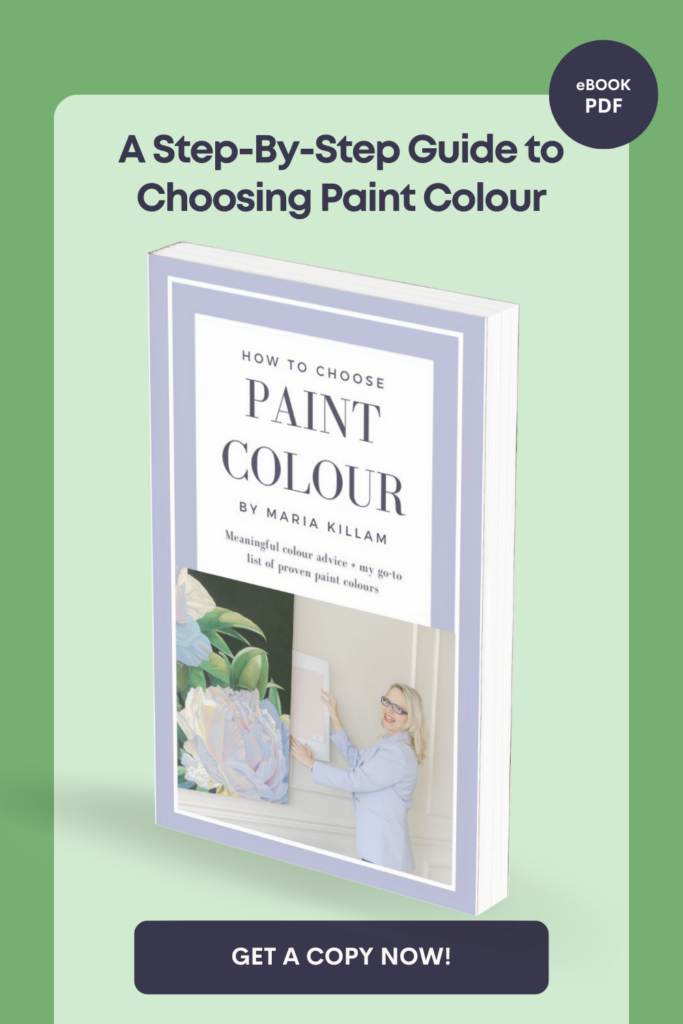
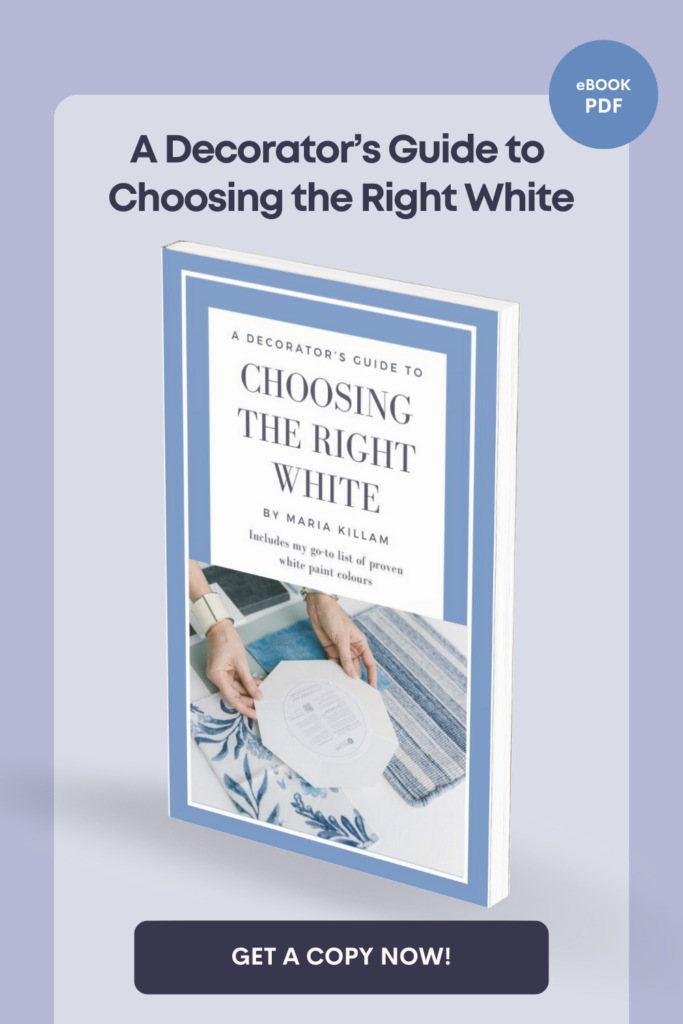
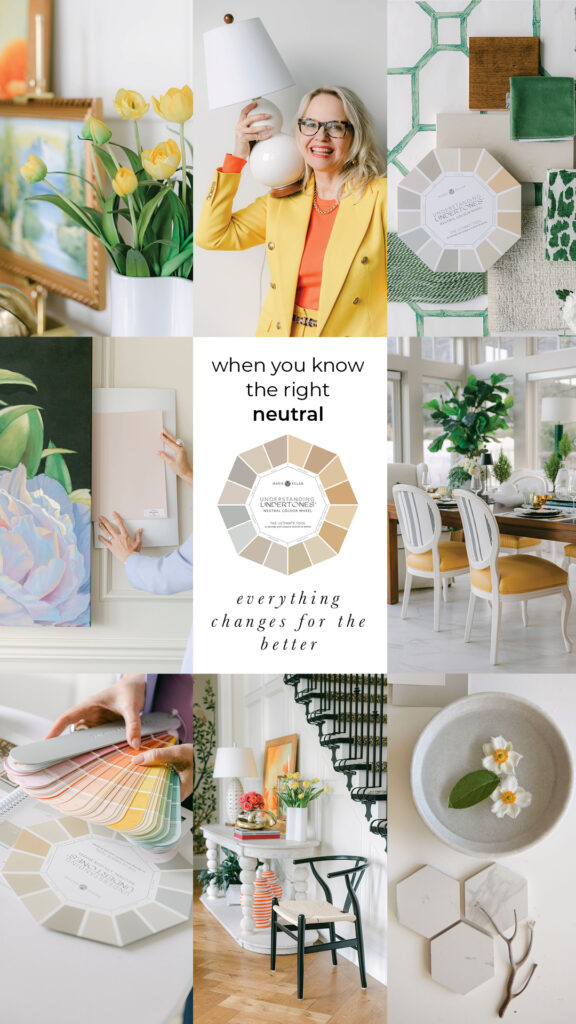

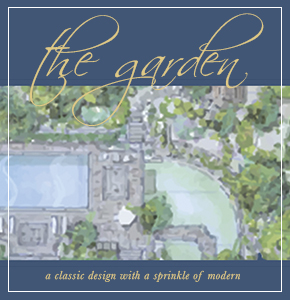



Maria,
This is SO VERY important to know -there are so many different light bulbs available that it easy to get confused.
It is amazing to me how you keep putting out incredible and informative posts year after year!!
Your blog was the very first on I found (years and years ago) and I still love seeing your posts!!
Thanks Maggie! x Maria
Maria great blog .
Yes light bulbs can definitely play a part on color .
With the fresh look we have been decorating with for a while .
The warm bulbs can change the color of your cooler tones .
The warm bulbs can make colors look darker or have a yellowish cast example white looking yellow .
I don’t care for the warm bulbs .
We have all led bulbs and lights and we try for at least 4000 k .
Some LED light fixtures now have to LED lights built in so when the bulbs go out you have to replace the whole fixture …
They are hard to find in the 4000 K bulb most r 3000 to 3500 K .
I had a bathroom with one of those light fixtures .
It had a 3000 k bulb .
Hated that room with the light on .
We took it out changed the fixture put in a 5000k bulb fixture we then loved the room .
My whites no
Longer looked yellow …
For what it’s worth, LED lighting has a downside to it, and it’s health-wise regarding your eyes…Dr. Mercola has great articles on this…
I have bright white in the lamp by where I sit in the evening. Makes it easier to read and needle-point. I have bright white in the kitchen, it came that way. Most of the other bulbs in the house are warm.
What lightbulbs most closely mimic warm sunlight? We are adding a screened porch on the north side of our home. There will be ceiling skylights facing east and west. Our goal is for the room to look as if it is flooded with warm sunlight. Any suggestions will be most appreciated!
Hi Diane, well from the range I just posted, if you buy lighting that is closer to 2000 Kelvin it will be warm and yellow, if you want more of a white, daylight look, go higher to 5000K or more. Maria
I have the halogen lights in my kitchen and family room, one room. I rarely run the den lights because they are too bright, and truthfully I hate over head lighting. I use the kitchen lights so I can see but they are too hot. I end up running a floor fan so I don’t faint at the stove. I would be interested in day light bulbs for sure! Or give me incandescent lighting anytime.
Great to see those three images next to each other.
I prefer warm lights in bedrooms for sure. Also in living spaces. But I could go bright or daylight in a Kitchen undercab or task lighting. I’d still want 1 light in there that’s warm in case I’m up in the middle of the night
I’m very sensitive to the effects of light. I can feel it waking me up instantly if it’s on at a time it shouldn’t be. I go so far as to have only red night lights so if I get up at night I’m not up for hours because of a blast of hormones telling me to get up. All our bathrooms are dimmable warm LEDs. (Red doesn’t dilate the pupils, which is why it’s used in movie theater step lights – and good bed side clocks.) As night approaches, we all naturally adjust lights dimmer, to help the night owls in our house force our brains to quiet.
It’s not simply the color temperature that makes colors look “true”, it’s the color rendering index, or CRI. The product you referenced has a CRI of 89, which is pretty good (look for >= 90 if possible). Good CRI bulbs will state the CRI on the packaging since it’s a desirable feature. Cheap bulbs have a CRI of 80 or so and generally won’t state their CRI on the packaging (you can often dig for this information). The lower the CRI, the more “off” the colors will look. You can have a 3000K LED with CRI of 90 and the colors will look much more true than with a 5000K LED with CRI of 80.
We use LED lighting everywhere in our home now. Because of vision issues, I use daylight bulbs in The kitchen and bathroom, and soft white everywhere else. I heartedly dislike the yellow tones. Also, did you know that our lighting needs change as we age?
Greetings,
We switched all our lighting to daylight in the early 2000’s. I remember driving up to our neighborhood one night and our outdoor light stood out from everyone else’s as we had the only daylight bulb. I find that it really gives a reflection of true colour regardless of the room design, wall or cabinet colour etc. It’s not for everyone but we like it. Instead of turning on 2-3 lamps, there is only 1 turned on for late night ambiance. Or, you can change your lamp shade or height to reduce the light being reflected.
We recently moved and switched every bulb again. Same thing with the outdoor potlights. The bricks and siding look much better (cleaner and crisp) than our next door neighbors and we have the same colours.
Regards, Nicole Foran
I’m really happy with the 3000K led strips I installed in my small kitchen. They don’t yellow my new white subway tile (Daltile 0100) at all. My countertop is a soapstone look and my lower cabinets are red, uppers natural maple.
I got my LEDs from Flexfire LED and they were super helpful. I do think 4000 or 5000k would’ve been too harsh, but it might be because my kitchen is small and has a big window (west facing).
I have these lights on nearly all the time. I wish I could post a picture!
I am not a designer, just love color. I have had true daylight lighting in my home for 20 years. I used to have to special order bulbs created specifically for artist / photography / surgical suites. (Painting, photography and needlework are all my hobbies).
I would get comments all the time that my house looked so clean! It wasn’t cleaner than other homes, it had high gloss tile floors and different color lighting than most. I also used a light taupe (true taupe with the purple undertones) for my wall color and that was cleaner and brighter than most during the builders beige trend.
I still use 5000 k which is a true white light. My home is a MCM and my style is MCM. Clean lines, teak furniture. My colors are still taupe, grayish purples, deep wine reds and grayish teals. I have no yellow beige in my home.
We tested multiple lighting temperatures in my sister’s home. She has a Tudor home with a lot of rich woods and her color palette is fall colors. She has some industrial mixed with Queen Anne antiques. The 5000 k light was too bright and clean for her home. We selected 3000 k based on how the lighting behaved in her home.
Did the same with my Sister in laws home – country style with cornflower blues and peaches. For her home we went with 4000k.
Just like paint colors don’t behave the same in every room of your home based on natural lighting, colors will play differently under different artificial light.
5000 k is like standing outside on a clear day at about 2:00 in the afternoon. It is the whitest white
4000 k has a bit of green wavelengths winking at you, just a slightly dirty, neutral white
3000 k is a creamy white with that bit of yellow that makes it feel warm and inviting.
2000 k is like the temperature of light at sunset (orange glow)
I am really fussy about lighting so I have two additional pieces of advice:
You want lights with a CRI (Color rendering Index) of over 90. Some colors don’t render as well as others under lower CRI lights.
You want to stick to one brand once you decide on lighting. The K values are rounded to the nearest benchmark, so one 4000k may be 3501 and another 4499 and if you have them close to each other it may be a visible difference. (Learned this when I replaced a single bulb in my bathroom fixture – the new one was clearly more yellow).
I often recommend changing lighting when a color isn’t reading appropriately in a room (especially white and light colors), but remember the new light will add the same change to every color. If you add yellow you add yellow to everything, not just the whites. It won’t miraculously make colors that don’t play well together get along.
I actually keep sample bulbs from all three shades in my closet, so that I can test my preferred lighting conditions against whatever colors I’m painting/decorating with, when I make changes! 🙂
In general, I don’t like warmer lighting. Colors look dingy and unappealing to me, in it, and everything seems “dim” to me. When I was younger, and there were fewer lighting choices, I would try to compromise by doing soft white in the absolute highest wattage I could find—150, when possible—and just deal with the fact that my bulbs would burn out ALL the time. Things were still too yellow—but at least they looked less dim!
I do love the light you get from halogens, they ARE hot, and until relatively recently, weren’t usually readily available in more than just track or commercial lighting scenarios.
LEDs, however, are lovely, because I can go for daylight lighting, and get BRIGHT, very task oriented lighting, everyplace in my home—and i absolutely love it!!! 🙂
I do reluctantly use a slightly warmer daylight bulb set in my chandeliers, because it does create more ambience…but I say “reluctantly”, because I just really dislike it when my clean, jewel toned greens and blues are dulled down by the light. I’m a photographer, I’m used to “seeing” the light—and it just continually nags at me, like a sore tooth.
Under the “did you know” category—since so many people are chiming in with fun factoids!—if you have newer glasses with an “HD” non-reflective lens—then you may very well have an slight amber tint in your lenses that you aren’t aware of! In the past, I’ve always edited images using just my contacts—but with the onset of age-related eyesight issues—aka, “I need reading glasses now”, I started editing with my progressive lens glasses, since their glass is clearer than the cheap glass you get from reading glasses.
The first shoot I edited this way, I was really struggling with color adjustments, and couldn’t figure out why…and at one point, after staring at my final edit unhappily, I had an itch, and flipped my glasses up to rub my eyes, and glanced at the screen before I flipped them back down—and the colors were DRAMATICALLY different (to my fussy photographer eyes, anyway! ;)). I flipped the lenses back and forth a few times—and sure enough—the glasses have a slightly warm tint to them, that was affecting my editing workflow—even though I deliberately did NOT order lenses explicitly tinted for computer vision! (Now I’ve gone back to editing with contacts, and the problem is solved. ;))
As for more soothing lighting in the evening…I’ve just never really cared for lamps—they seem fussy and unnecessary to me. I use candles, when I want ambience—otherwise, I’m in task mode—and I want color fidelity in a bright, daylight task lighting. 🙂
I have variable color smart bulbs in my living room lamps so changing from warm to cool or even colors like red or green is as easy as saying “hey google, turn the lamps to warm”. Love it.
I never buy a light bulb above 2700K. I am VERY strict about that. I’ve worked over the years fix my sleep issues, and having the right light bulbs is critical.
Nice post! Lighting plays a huge role for me. I am very much affected by ambiance. I prefer warmer lights in the evening and brighter ones during the day. Fortunately, with our last remodel 2 years ago, warmer LED’s were available for our under cabinet lighting. One drawback is that when LED’s are “dimmed” I think it looks a bit gray and not cozy at all. Fortunately we don’t need to dim those under the cabinet. We also have LED can lights in the ceiling. Those are only on during the day or when I really need the light in the kitchen. Otherwise we just rely on the under cabinet, the hood lights (switched from Halogen to LED and so much cooler), lights over the sink, and chandelier and scones by the table. When my husband puts an LED bulb in a lamp I notice it right away and immediately switch it out! Not conducive for evening. However, we do have articulated sconces with “old fashioned Edison style ” bulbs which are LED’s and provide a warmer/less harsh tone for evening and bright for daytime. You just have to hunt for them. And sometimes they are too orangey. But LED’s have come a long way. Yet still room for improvement. I will never put the current day LED’s in my chandeliers or scones in the eating areas of kitchen or dining room. Too cold for me. For my home office I have one LED lamp for day and another lamp with incadecent for evening. To me lighting makes or breaks the mood of a room. On a cloudy day I’ll have all the lights on and then when evening comes I have to dim them. (and then put on reading glasses.. 🙂 Is it just me? In summary, having both seems to work well.
I care deeply about what LED and blue lighting does to our mitochondria in the evening hours before bed. And while we sleep, too. We set our LED lights to a cool daylight white during the day but when the sun goes down, we change the lighting to match the colors of sunset. Yes, it makes the room a much warmer color.
LED lighting is a complicated subject, and as the technology develops and changes at ‘the speed of light’, (pun intended, but true!), it becomes obvious that there are no ‘one size fits all’ solutions. Choosing LED lighting involves Color/CRI, Temperature (measured in Kelvins), Watts (which doesn’t mean the same as it does with incandescent), Lumens and more. Not all LED’s work with dimmers, adding another component to the mix. The American Lighting Association is a good source for information. My starting point is 3000K with a CRI above 90. I don’t let my clients select any finishes for their cabinets, countertops, tile, etc., until we determine their light temperature preference. There are recessed lights now available, with the ability to change the temperature, and the new ‘smart light bulbs’, give more flexibility as well.
Appreciate all of the comments…very insightful (we are the owners of this kitchen). Not only do these lights change from warm to cool to daylight by the flick of a switch, but the intensity level of each of the three settings can be changed via a dimmable wall switch. We really like the daylight as it unifies the solid surfaces of pink beige (backsplash and floor) and cabinets (exact match to Natural Wicker (OC-1). In person the daylight makes the cabinets less yellow and this will become even better when we paint the place Maritime White (963). The condo faces south with high gloss cream tile and window walls looking over the intracoastal waterway). We also like the daylight because it makes things easier to see while working in the kitchen.
Thank you both of you for FINALLY giving me photos that made this post possible! And thank you everyone for such insightful and helpful comments that definitely made this post even better! xo
I appreciate Jennifer’s comment. In the homes I work with 3000 often seems bright because it’s brighter than the 40 or 60 watt incandescents they are replacing. I definitely prefer 4000 in the kitchen and my old led under cab strip DOES give my backsplash and counters a yellowy green cast. I’m grateful to learn about the CRI too. I agree with Jennifer that it depends on the style of the home. 5000 would be wayyy to bright in the Tuscan brown 2000-2010 builder homes I help to update. In fact it looks blue – a bit sterile. But in a MCM or Modern home I could see how they would sing! My family members state that too bright a light causes headaches…so there’s that to consider too. Thank you for the product recommendation that’s widely available at Home Depot. That makes it more accessible for many!
YEAH! this is finally catching on. I had changed out my overhead bulbs to daylight. The entire room color looked more precise. loved it in the kitchen as I could definitely see more clear. Recently I did a bit of updating in my kitchen and changed out old under cab lighting to this new on with the three levels of light. Seeing the difference like this really shows. I have found in my home the 4000K actually looks better. Yes, I have even put them in lamp lighting just a lower watt. Also, all of my ceiling lighting are on dimmers.
Maria, WOW! Another great topic! Thank you for always providing a blog where you share your insights but also ask for other perspectives!
I agree with several others that the CRI # on LEDs is so important to pay attention to. When we switched all the lights out in our home for LEDs, we purchased several brands locally and then ordered some online. I love the 3,000 K leds even though my home has a cooler color scheme. The thing I noticed most about the various brands was how much of a color difference there was between brands due to the CRI #. The bulbs I choose had a CRI of 92 and was closer to true natural light than those with lower CRI. I don’t use lights during the day since our home has massive amounts of natural diffused light but in the evenings, the 3,000K provides enough light without being too much. We also installed dimmers on all the switches so we can adjust the light that way as well.
As you and others mention, the room and the function of the room inform the color I prefer (e.g. warmer in living room and bedroom vs kitchen). LED bulbs do have a drawback and it’s the amount of blue they emit. Blue light from devices and LED bulbs affects our circadian rhythms and sleep cycles – and sleep deprivation is already a big issue. It’s important to limit exposure especially for a few hours before bed – something to consider when choosing bulbs or even considering investing in smart lighting that can be changed (as Jeff did).
There’s also recent research on eye strain and LED lighting, but I’m not as familiar with that.
I too am picky about the color of the light through my house. I use a mix of warm light (my preferred color) and daylight for clean bright work lighting. I can’t STAND greenish or blue lighting!
So, tell me, is it totally weird that I feel like the temperature of the light influences my mood? My husband put these super white, daylight, bright bulbs in most of our can lights, and when they are on, I get ANGRY. Not like, ‘I’m mad that that lighting is being used’, but like there’s a chemical change in me and poof!: anger. Even seeing the light shining out of a doorway to another room gets me! Our kitchen lighting bothers me the least, and it’s oldest and toned down some now too. My bedroom?: get those bulbs outta there!!! Anybody else? Just me???
OMG! Same! we bought a new construction build that has all the bulbs included and all of the recessed lights are a bright cool white and I am so irritable when they’re on. That’s why I’m here researching replacement bulbs. And same with light from another room creeping in. My husband thinks it’s weird that I’m that sensitive to it (and constantly asking him to turn the lights off before I can relax to watch tv at night), but I just get irritated and can’t relax with bright white lights on. A huge consideration as to whether or not I like a restaurant is their lighting. Nothing worse than a great place with great food and terrible, bright lighting. I much prefer warm light. You’re not the only one. 🙂
Hi Starr, you’re irritated because you need at least 6 lamps in each room, and NO ONE should have recessed lights on (kitchen being the exception) for any purpose other than locating your contacts! Maria
Ugh! Most LED light is horrible in “living” spaces. I have put 2700 K in my kitchen and that’s as “white” as I’ll go. I have been in other homes and honestly the light looks institutional blue. Not for me. Go to a lighting dealer so you get good advice and can swap bulbs back and forth until you get it right.
I think a room with a lot of cool-toned paint, tile, etc. can look sickly in yellow light. This is true of my bathroom with gray walls and lots of carrara.
My issue is a mix of bulbs in an open space. My undercabinet lighting is cooler than other lights in our open living/dining/kitchen and they look in conflict, even though the space is very spacious.
I am definitely concerned about the effect of blue light on me and my family. The EFM etc. It would be nice if the lighting people would too- but sadly-most act like you’re just being woo-woo to even ask questions. ( and also I too love warm light in my living room. )
I personally do not like the super white, or nearly blue white, of the higher color temperatures, but that is just an opinion. I can tell you color temperature DRASTICALLY changes the color of your finishes. As an investor with 20+ renovations under my belt, I have pulled out all the bulbs in my kitchens and changed them out to get the look I want many times, with satisfactory results. An example — my beloved agreeable gray looked like a cold and sterile blue gray in my last kitchen under 5000 bulbs, showing every imperfection in the 100 year old plaster, but soft and lovely with less noticeable imperfections in the warmer temperature. Another example, I painted Divine White in a north facing bedroom — looked great until you opened the door to an exposed brick wall, and the bright light and red brick turned my room ballerina pink. I changed the bulbs, and was back to a more manageable off white. Just my 2 cents. Much easier fix to change bulbs then change finishes.
I cringe when I see blue light emanating from a home, it looks so cold. Since lighting is very important to me a few years ago, to help with shopping, I make a chart to carry relating the K scale over a range that started with candle light and went to bright daylight. We have a lot of brown in our “late Tuscan trend” home and I’m happy with about 2700 K everywhere but in the closets and laundry where 4000 works, and 5000+ in the garage shop. Good to know about the CRI scale!
Also, I read somewhere as we age our eyes change so maybe preferences for lighting qualities change over time? My experience say I need more yellow in my light than I used to, so maybe my “yellow receptors” are going bad.
For those concerned with LED lighting and sleep, my PC has night light settings available under Display settings. I schedule night light for between 5:00 pm and 8:00 am. No problems falling asleep after that late streamed move. ????
I have struggled with insomnia. ‘Sleep Hygiene’ is important to me. My spouse & I decided, where applicable, to have both sets of lighting available. In our master bathroom we have two light switches: one for lights at the mirror (daylight LED’s) and the other for recessed lighting over shower & tub (soft white LED’s). In the morning the bright light helps me wake up. At night we only use the soft white switch. It’s enough light to do our evening routines without over-stimulating my eyes. In the kitchen we have a similar set up.
It works well for me.
Warm and cool lighting is a big concern of mine for my own health and wellbeing. That said, before I learned of the effects of cool light on Alzheimer’s patients I insisted on cool lighting everywhere in our home. If you have not heard about this… a study was done in two different Alzheimer’s wards. One had cool fluorescent lighting and the other had warm fluorescent lighting. On the ward that had the warm lighting the patients slept through the night and kept a “regular” schedule. On the ward that had cool lighting they had difficulty with the patients staying up all night and becoming irritable.
When we prepared our home to sell (built a new ranch that’s easier to get around due to knee and hip replacement), the photographer was so pleased we had daylight lamps. He said the photos look much better when listing. He was correct. The pictures showed our home to it’s best advantage and it sold in six hours and for 2K over asking. Lesson: Lighting makes a substantial difference!
I’ve always enjoyed warm lighting in all the rooms of my house. We used to have a fluorescent fixture in our kitchen that I forbade anyone to EVER turn on! Now I’ve switched all our bulbs to LED and I love it.
Then, if designing a space from scratch and you want it to look good in warm lighting and candlelight, would it be best to go with cream cabinets rather than true whites?
The 2700K LED lighting is most similar to traditional incandescents in color. My personal preference is the 3500K range…less yellow but not the 5000k blue white. The amount of lumens will determine the brightness not K rating. I found that a couple of years ago that Home Depot had best selection of the 3500k bulbs in varying Lumens. They accepted opened bulb packages…the kind that require scissors and possible swearing to open!! Anyway, I found the color and brightness that I like and returned the rest.
It depends on the room. We have about 10 lights on a dimmer switch in our bedroom (former owner was an electrician). When we put in the 1st LED light in, even on the dimmest setting, it was too bright. We did, however, put all LEDs (also on dimmer switch) in our kitchen. I have not noticed a change in the color temp of our kitchen, which has both cream and pure white (I know, it needs work). I don’t think I could get too much light in my north-facing kitchen though! I suspect the adjustable temp lighting will eventually be the norm, replacing dimmer switches.
I am totally blown away with all of the knowledge that your followers have shared! I feel like I have been in the closet with the lights off all these years! I have always been aware of how lighting affects color and mood but certainly not to this extent. I am however concerned how LED lighting affects a persons health as Marilyn has stated. I too follow Dr. Mercola. I like the smart lights idea and will look into them as far as health issues and the affect on your circadian rhythm.
The pictures that you shared are just amazing and such a difference with each kelvin. Thanks for giving us new things to think about!
Very interesting information. Does this mean that lighting should be first on the list if planning for a color change, i.e. update the lighting before selecting a color?
I loved seeing the 3 side by side. Looking at those 3, I prefer the 4000K, but I’m surprised how much I also like the daylight. I think it really depends on your home. I am a home stager and do some design as well. I actually have a light bulb document that I give my clients explaining all the different LED lighting options because everyone is confused. I usually recommend 3500K in most homes in my area because they are transitional and just don’t look right with Daylight (unless they’ve been freshly painted and have more of a contemporary feel), and 4000K are harder to find locally. I do specify a brighter bulb, though (usually 100W equivalent), which can counteract some of the warmth and brighten the home that doesn’t have a lot of natural light. I will recommend daylight bulbs in cleaner, more contemporary spaces. I prefer bluer light in kitchens and bathrooms, but I like a bit warmer in bedrooms and living spaces. 2700K is a bit too warm for me, but 3000-3500K is usually fine in most cases. We recently replaced the lighting in our kitchen and tried 3 different bulbs before we got the ones that looked best.
Excellent point regarding the CRI value. It can make a huge difference to how brilliant colours appear and is (in my opinion) worth looking for. Here in Australia, Philips is the only brand I am aware of that shows the CRI value on the packaging. The “el cheapo” bulbs don’t have it. I stay away from them. Colour representation can really affect how happy we feel in a space.
I’m going to tell you all something that you might not believe. If you are in your late 40s or older, the colors you are seeing are not like the colors younger people are seeing.
I had one lense replaced with an acrylic lens. I was 55 yo when I had this done. The optometrist told me that I would see colors a lot clearer and with less yellow because the discoloration of my lens would be gone.
I laughed and said, I don’t think that will happen. I’m a young 55!
Well, after the quick surgery, I opened my eye, and OMG…the difference was stunning! My old eye, that I did not have fixed shows everything with a yellow/brown tint, like a nicotine tint. All whites look brownish/yellowish. I would have SWORN that it was white.
When I got my “new” eye, I could see the difference.
So ladies and gents, and all you designers out there….this is a REAL THING.
And the way you see color is not like your neighbor sees color.
Bottom line…it should only please you and no one else as to how your lighting is.
I am one of the few people with one eye aging normally, and one eye like a teenager. I can see the difference in each eye…and this happens to us ALL. Even if you don’t think you are effected, you are.
Also, lastly, LED is really bad for the eyes and the brain. The daylight color WILL create sleeplessness over time if used up until bedtime.
I much prefer warmer lighting. Just feels softer and more relaxing. Great post!
Great topic and post! I consulted Young House Love on which bulbs to buy because John of YHL is a nerd about light bulbs and they explain things well. I have a small west-facing kitchen with overhead two overhead fixtures. I tried out the 5000 kelvin bulbs but they were two blindingly blue-white, so I got the brightest warm light bulbs. It looks ok in person but the room is quite yellow in photos and videos. https://www.younghouselove.com/best-led-light-bulbs/
I prefer table lamps with warm light. I do not like overhead light at all unless I dropped something on the floor and can’t find what I dropped. I have dimmers all over my house even in the powder room but I have a small lamp that I turn on when I have company. It is a nice touch. My kitchen unless I am preparing a big meal my lighting again is soft I don’t turn on the overhead unless I need it. Now I need to go look at my light color in the kitchen. Oh my.
Michelle (above) mentioned color rendering index plays an important part in how we see color. She is correct! As an ASID (American Society of Interior Designers) member I’m required to meet annual CEU credits, one of my favorite topics is LED lighting. I have learned sunlight has a color temperature of 5500 K’s with a CRI of 100. Our industry seems to be moving towards CRI’s of 90+ as that it is what is required for Energy Star rating. Plus, colors read much truer at this level. The other, even more important thing to keep in mind is, when specifying under counter lighting, Kelvin Color Temp matters! It can change the color of raw beef from an appealing red to a ghastly grey.
IMO…the absolute best light bulb EVER for ambiance is the GE soft pink light bulb. The led pink bulbs on the market today are horrendous. Once upon a time GE soft pink bulbs were available for flood lights, can lights, three way, and various wattages. Now I can only find them online in 60 watt bulbs. I frequently get compliments on my lighting and how warm and welcoming our home feels.
The vendor (no longer in business) I used to buy them from once told me funeral directors and me were his best customers! Haha. Soft pink incandescence light bulbs make everyone look good.
I love this post and I especially love Diane’s comment that she buys the GE soft pink lightbulbs online! I’ve looked for these at Home Depot, Lowe’s, Wal-Mart, Target, etc. for about 6 months now. Face palm moment! Duh! Online! Thank you Diane if you see this!!
In 2014, I rented a rustic house with soaring ceilings. It had lots of wood punctuated by white walls.
I put in some Soft White LED bulbs. Then I saw FULL-SPECTRUM Soft White LEDs and put in some of those. Same brand.
The difference was obvious. The wood looked flat and yellow with the regular LEDs, but it looked rich and vibrant with the full-spectrum bulbs.
At the time, the store guide indicated “Daylight” bulbs were super bright and for garages. Whereas “Full-Spectrum” was softer light with more true colors. I don’t know if this is a universal definition.
I have both under the counter and over the cabinet lights. I rarely use the over cabinet lights, but on dark grey days I turn them on. I made the mistake once of putting daylight bulbs in. This was horrible and I quickly canged them out. Just too blue and cold a light. I don’t think anyone would want this in their home.
Great topic! I re-read the majority of your posts, Maria. They comprise a reference library of sorts, for me.
I’m in the Pacific NW, as are you, and crave a bit more warmth in lighting, since ambient light is so blue-gray compared to when I lived in Los Angeles and Houston.
I love the warmth of 2700K LED, and use it in many living spaces, but for kitchen and bath go to 3000K for “true enough” lighting for cooking, putting on makeup, etc.
It also depends quite a bit on the diffuser glass, if there is one–my vanity lamps in one bath have a creamy/almost yellowish cast to the glass, so much warmer light comes through than the overhead recessed, even though both are 3000K bulbs. Overall combination of both is just perfect (beautiful with the paint colors I chose with your blog’s help…BM Pure White walls and BM Super White trim to go with the faux Carrara marble tile).
Similarly, fabric shades make a difference in effective warmth; my bedside reading sconces have a shade with an ivory cast, so a 2700K bulb is too warm in combination with the shade. I go to 3000K there and get good reading light, and a warmth that is similar to incandescent.
3000K is the ‘coolest’ I will go! I know it is still considered ‘warm’!
Another great post, thanks!
We just bought and remodeled an 800-square foot condo. The kitchen and living room are open and side-by-side, so kitchen lighting influences living room lighting. The kitchen is white so I didn’t want to yellow my cabinets with warm lighting. But I also wanted to have warm cozy lighting in the evening while reading or watching a movie in the living room.
For recessed lights throughout the condo, we installed Halo Selectable lights where we could select the Kelvin. I chose 3500 throughout, which for me is a happy medium between warm and cool. For kitchen undercabinet and toekick lighting, our electrician installed LED tape lighting that had only two options: 3000 or 4000. I chose 4000 because my backsplash is also white. In the bathroom, I chose 3000 for under vanity tape lighting because my sconces were LED 3000 and could not be changed. I like the warmer light in there, especially at night.
Our solution for a warmer, cozier light at night are lamps with LIFX bulbs (LIFX – Mini 800-Lumen, 9W Dimmable A19 LED Light Bulb, 60W Equivalent – Multicolor). I also placed these bulbs in my kitchen pendants. You control LIFX bulbs with an app that allows you to make the bulbs whatever color you want. During the day, I’ll set the kitchen pendants and living room bulbs to 4000 to match the kitchen lighting. As the sun gets lower, I’ll set them to 3500. After sunset, I’ll change them to 3000. Once we’re settled down to read or watch a movie, we’ll turn off the kitchen recessed and undercabinet lights, and I’ll set the bulbs to 2700 or 2500, or sometimes 2000 for a deep orangey glow. It’s the perfect solution for our space.
I love this post. We have been having trouble finding the right bulbs for the recessed lights in our kitchen. I thought I wanted a soft warm glow but our current bulbs make our off white cabinets slightly yellow/green at night, which feels more commercial than comforting. My husband loves Phillips Hue color changing bulbs. I just discovered they have a White Ambiance version that is a little cheaper than the full color spectrum version, and can be adjusted from cool to warm. Thanks to the other comments, I now know to ask about the CRI value before purchasing anything. I’m so grateful for this informative blog!
Great post to go with your post on “white” paints and using lamp lighting. Only one more important component…lampshade colors. Thank you.
Most lampshades should simply be off-white. If they are stark white they look cheap and since every well lived home in your house should have at least 6 lighting sources, it looks better if the shodes are basically the same colour so you notice the atmosphere that’s created by the lamps NOT the colour of the shades. Hope that helps, Maria
Hi Maria,
This is a very interesting topic for me..
I think colors and lightning are the most. powerful tools in the interior. Haha, of course we are all romantics and dream about the chimney in the house.. Really the lamps are associated with the real fire in our minds.. I have recently found a lamp imitating fire and was totally mesmerized with its live flame.. I love the latest LED solutions when one can illuminate sertain parts of the room. First of all it creates mood and makes room sooo cozy at no price – the most important aspects of the living space design.. I am sure Jeff and Cindy now feel like in a restaurant with LED lighting under the cabinets…
Thank you so much for clever advices!! I will be thrilled to know more about modern lighting solutions from your blog … I even thought of opening a lamp shop one day haha.
Ah yes! Popular post. We all have stories 🙂 so we purchased a color consult for our old home with Maria. Green based beige was the recommendation to work with the trim. Repainted and it was still yellowish… the edison bulbs definitely were the worst offenders so we went cooler and I switched the lampshades to whites. In this home we have not yet painted 90% of it but the north facing kitchen which is gloss blue and white cabs with track lights on all the time, had to have cool bulbs as everything was cream … no way I was going to have cream!
I prefer a warm light regardless of the time of day or space I’m in. I just find that the warm light makes me feel more relaxed.
Hi Maria~
I just love your website! Here is my lighting story.
I supervised the build-out of a medical office space that had a coffered ceiling in the reception room. I am NOT a designer. There is strip LED lighting along the outside edge of the coffer. The owner wanted the ceiling to be blue (in the interior, I hope I’m explaining it correctly) We tried several colors but they ALL showed up with lavender undertones. I tried many different colors. I could not get a true dark blue no matter what when the lights were on although it showed up as the true color when the lights were off. We went with Navel by SW and its beautiful and true to color but only when the LED lights are off. Now I know why.
Yes, there is more to lighting than color temperature. PLEASE don’t forget to check the Color Rendering Index (CRI). A CRI of 85 or better is preferred. If the CRI is not listed or not available, steer clear. The CRI measures how true to daylight colors will appear. If the CRI is below 85, the colors will not appear correctly. Most people who purchase lamps (bulbs) are often unaware of this and end up buying lower priced lamps (bulbs) which typically have a lower CRI at their favorite big box store then end up miserable. Also, 3000K for kitchens and baths gives a nice clean light (similar to MR16, and will NOT yellow your cabinets. Just some thoughts….
We changed all of our recessed lighting to 5000K and use Ecosmart 5000k light bulbs in our lamps and fan lights. We love it! I wish there were more options available for 5000k in ceiling mounted lighting and over the dining room table lighting. We have an open floor plan and in my line of vision with vaulted ceilings I can see my table lamps, a ceiling fan, my kitchen dining table light, ceiling mount kitchen light and light for my office off the kitchen. Trying to find complementary lights with the same 5000k temp has been impossible and we are seriously considering just adding more recessed cans instead. I’m curious if because we live in south Fl the 5000k seems natural to us and not overly bright because it’s always so bright outside anyways?
Maybe it’s the undertone of your decorating. Do you have a lot of black/gray, etc? I could see how yellow couldn’t be a match for that. Personally I like the warmer feel.
I prefer daylight for under counter lighting. We just put in brick backsplash. The hood lighting has daylight tone & our new LED under counter is warm…. changing those to daylight! Didn’t like the yellow it hued our brick!
I enjoyed your post. I found it while searching for a solution of what to do with our space. We have an open floor plan that runs from our kitchen through our dining space to our living room area. There are two rows of recessed can lights. The issue we are having, as you can imagine, is either choosing one light color, so all the lights look the same and make the kitchen (white cabinets) look bad or have bright white in the living/dining area OR choosing two different colors and having lights in the kitchen with one color and ones just on the other side of our peninsula a different one. Any ideas?
Since you asked… Yes, I am very interesting in circadian lighting. Also I am embracing dim to warm technology for my new house. When the lights are turned up they are cooler, and as you dim them they get warmer. This seems like the best of both worlds. I studied with lighting designers so I have few can down lights which I find ugly and really only useful for certain situations. Reflected light is so much better, so I have uplights, step lights, ceiling fixtures/chandeliers, and the overhead lights are all gimbals so they can be pointed at art on the walls, or an area which needs task light.
A big lighting mistake people make is to spread can lights around a room geometrically. They should be centered on things you want to light, and general light should be centered on the wall, not the room. Step lights are a game changer. A small amount of light spread through the house pointing downward and lighting your way is all you need to get around most of the time, so there really is no purpose for all those overhead can lights.